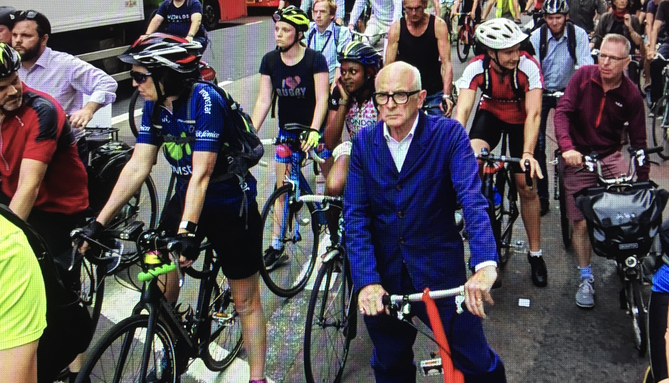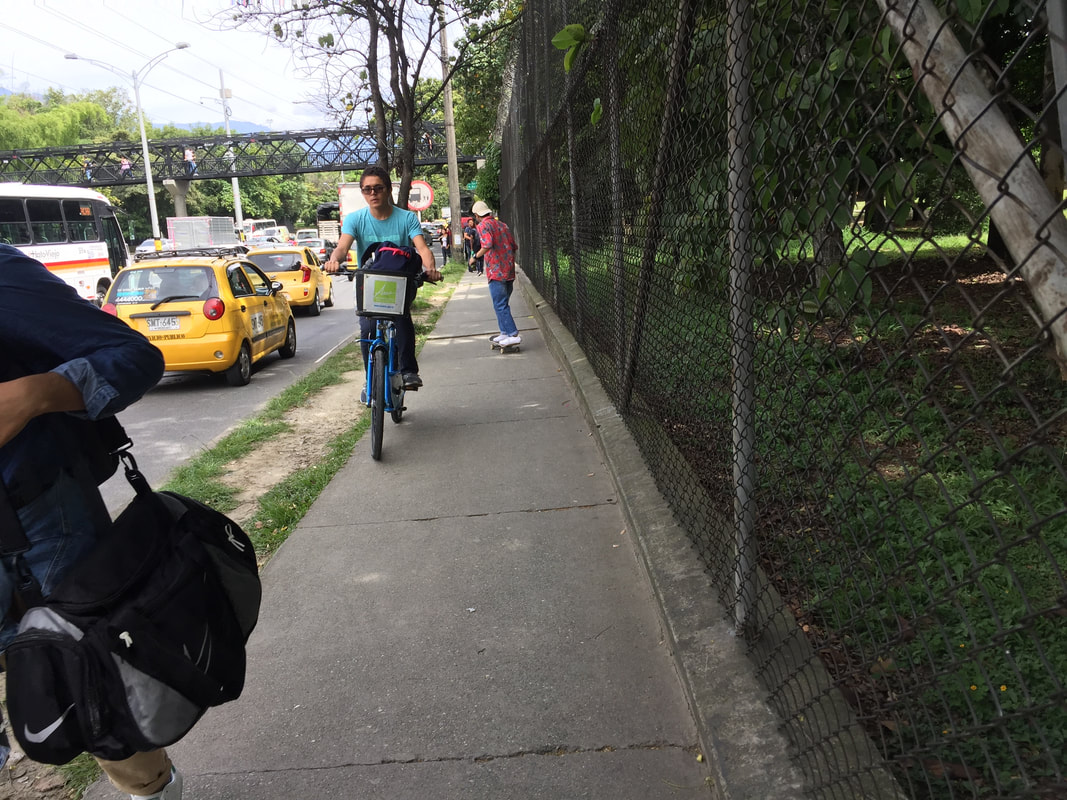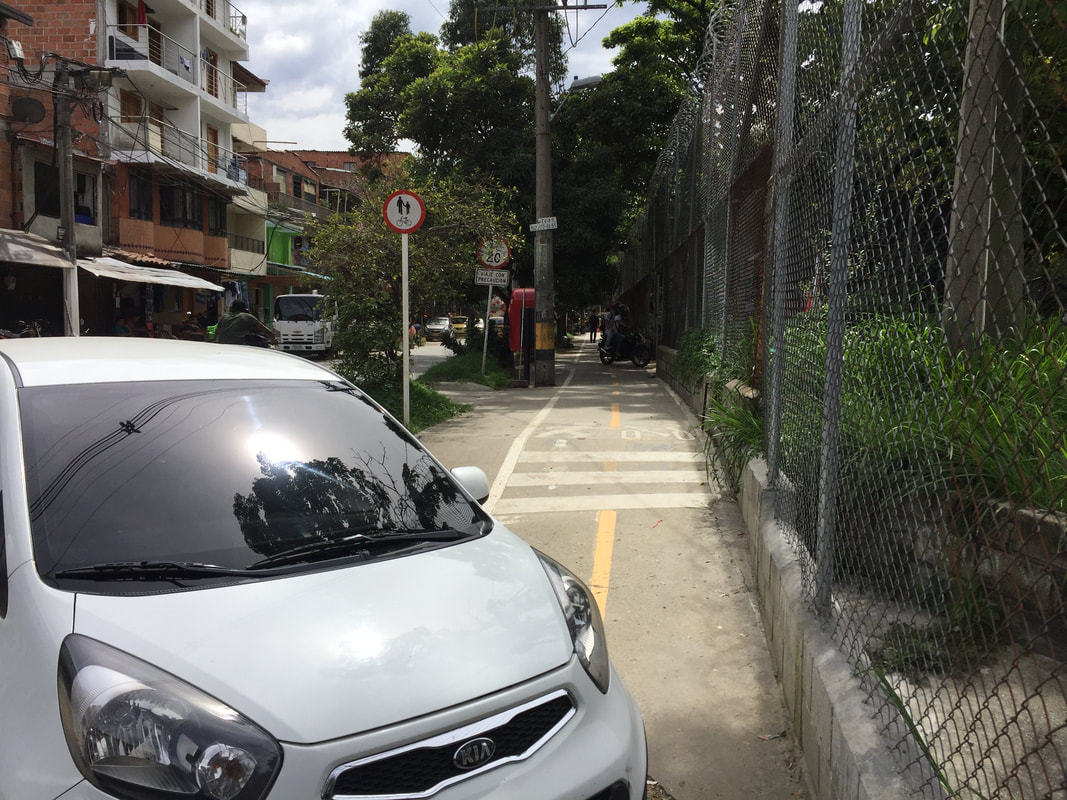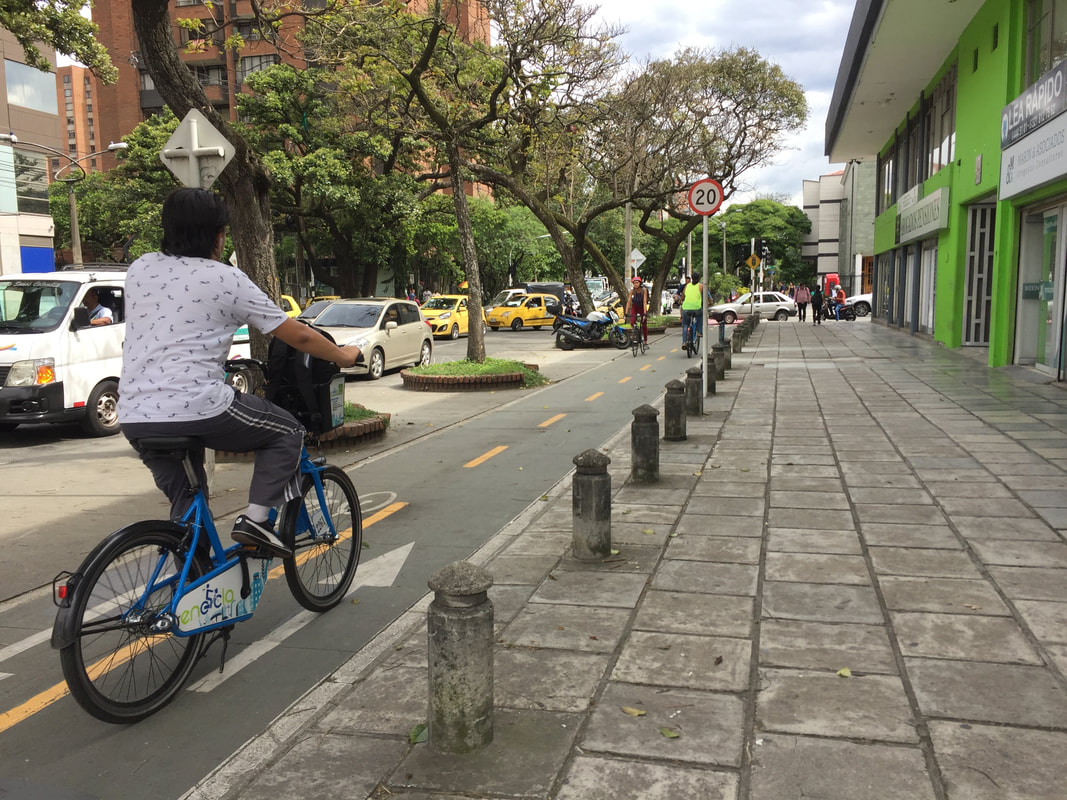|
Medellin is a fascinating city. It sits in a valley with a river running, north south, down the middle. Large areas of the surrounding mountains are covered with precarious slum housing similar to the favelas of Brazil or barriadas of Peru. The traffic is terrible and there are plans to restrict cars by permitting access to odd number plates one day and even the next. It has an excellent metro system that largely runs parallel to the river and stations are linked to the four lines of spectacular Metrocable cars that span the city. The cable cars allow a transport system to be threaded into the dense slum areas with minimal disruption and efficiently traverse the steep inclines. Bus stops and cycle share are located at metro stations, providing a satisfyingly integrated system. Every Sunday and public holidays there is a cyclovia around Avenida Poblado between 7am and 1pm. I was told there are some 100km of cycleways in the city (a link to them can be found here) and so I decided to investigate. I started at the Botanical Gardens and followed a route going south. Crossings are linked to pedestrian movement rather than vehicular and marked in red - so you cross when the peds do.  The cycleway turned onto a wide street with a well marked route next to a tree-lined pavement. But then came a bit of a surprise and cyclists turning right were directed onto a lightly segregated cycleway which ran down the middle of the road which did little to prevent encroachment by vehicles or was great for peds. Then, as so often happens, it ran out of steam and cyclists were forced onto a rather narrow and at times crowded pavement. But then as quickly as it had disappeared, it started again as a shared foot/bike path: Further on I was impressed by the new connection into the University, which was very busy and included a bikeshare station. The route then went into the middle of the road again. The raised section between four lanes of traffic is safe enough for cyclists, but again, poses problems for peds. It's also pretty polluted. Then came a more successful bit of light segregation followed by a nice, wide street where cyclists are segregated from traffic by trees and from peds by bollards and planting. I then got to a Metro station where Bikeshare links up to the rest of the public transport network. The cycle route continued on through a lovely park, following the route of the Metro.  I finish with a shot of a junction protected by rather interesting bollards. I presume the holes are in there to take a chain or a rope; they provide a high degree of protection to cyclists, are easy for peds and look OK to boot. I was only in Medellin for three days and am in no way an expert, but I was very impressed by the ambition of the city to face up to some pretty amazing challenges, not least repairing the city after decades of drug trade induced violence. The charismatic Mayor of Medellin in the early noughties, who then became Governor of Antioquia state is Sergio Fajardo, a mathematician rather than a politican whose father was an architect. He saw the benefits of providing the poor with a strong social infrastructure and built an amazing array social and sports centres, libraries and hospitals in the most needy areas. There is even a spanish disctionary definition of 'fajardismo'. One cannot leave the home of Quintana, Chaves and Uran without commenting on more adventurous cycling. In spite of the competitive reputation of Colombian cyclists I saw none of the aggressive cycling one sees so often in London - although where there were no cycleways, riders were fearless as they mixed it with the busy traffic. Most impressive were the massive climbs in the surrounding mountains - on every car journey out of the centre one encounters dozens of cyclists, amateur and professional, training in the thin air.
1 Comment
|
Archives
October 2020
Categories |
















 RSS Feed
RSS Feed